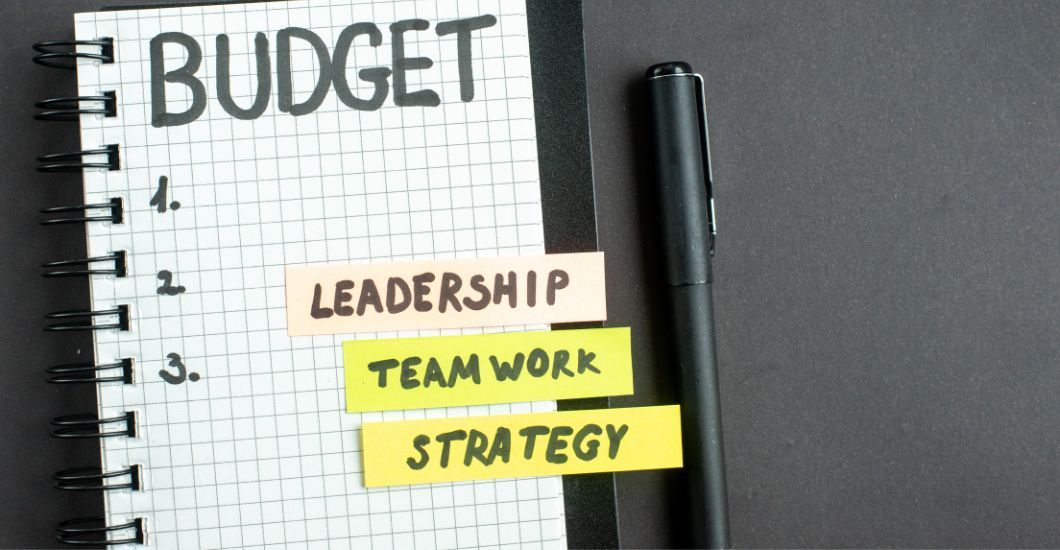How to Create a Project Budget in 2025 [Ste-by-Step]
Creating a project budget is one of the key responsibilities of every project manager. A project budget serves as a direction, determining the flow and the success of every project within an organisation.
However, project budgets should be carefully crafted in order to produce successful end results without harming the company’s financial profitability.
This guide will teach you how to create a project budget, including the typical cost categories, considerations, risks, and tools. So, whether you’re a project manager or responsible for crafting effective project budgets, you’re in the right place.

What is a project budget?
A project budget is a projection of all the financial costs needed to complete a project successfully.
Project budgets should include the allocation of resources for the required project activities, set spending limits, and act as guidance for achieving specific project goals within the defined budget.
Typical project cost categories
To ensure comprehensive financial planning, it’s crucial to understand that project costs can be split into a lot of different categories. The following are some of the categories you should take into account, depending on the type of project.
I. Direct vs. indirect costs
Direct costs refer to the expenses directly involved in making specific products or services related to the project. An example of direct costs would be the cost of labour that is manufacturing the product and the costs for raw materials or components used for manufacturing.
Indirect costs are not directly related to the production of specific goods or services but are still very important to support the process. An example of indirect costs would be fees for administrative workers, administrative costs, office supplies, rent, and others.
II. Fixed vs. variable costs
Fixed costs are the costs that remain constant regardless of any possible changes in the project’s output. For example, rent and some salaries are fixed costs as they don’t vary based on production amounts or other variable project factors.
Variable costs, on the other hand, vary based on the specific output of the project. For example, materials and components or fees for project-based workers may vary based on the produced amounts or working hours.
III. Sunk vs. prospective costs
Sunk costs refer to all the historical costs that have been incurred. These costs can’t be recovered and don’t influence future project-related decisions. An example of a sunk cost is the expense made for product development.
Prospective costs are future costs that will occur based on the project flow. These costs are more important in planning a project budget as they’re determined by specific decisions made during the project operations.
IV. Pre-operating vs. operating costs
Pre-operating costs refer to the costs associated with all the relevant operations prior to starting the project. Such costs can include research and development costs, planning costs, training and education costs, and others.
On the other hand, operating costs include all the costs made from the start to the end of the project. Examples include wages, manufacturing costs, maintenance costs, marketing costs, insurance, taxes, and licensing fees.
V. Other cost categories
Some organisations may categorise project costs in other ways, such as contingency costs, capital expenditures, marketing costs, consulting fees, and other categories specific to the project’s needs.

Things to consider when making a project budget
Regardless of the type of project, planning a budget is a strategic process that requires a couple of considerations in advance. In the section below, we outline the most important aspects to take into account when assembling a project budget.
A. Cost estimates
We have already established that project costs can be classified into different categories depending on the type of project. Hence, project managers should create cost estimates for each operation of the project.
It’s important to note that cost estimates should rely on historical analytics and current market insights in order to provide the most accurate guidance for successful project completion.
B. Budget contingency
When executing specific operations, it’s not uncommon to encounter challenges or unplanned occurrences and events. This is the exact reason why project managers should consider planning a contingency budget.
Contingency serves as a type of emergency fund to cover unexpected costs of changes, delays, and other events that may occur during the duration of the project.
C. Budget monitoring
Active budget monitoring during the execution of the project is important for efficient spend management, including tracking discrepancies between estimations and actual costs and making action plans to prevent unexpected costs.
Besides preventing unnecessary expenditures, regular monitoring and control will also help to make budget adjustments to avoid financial harm.
Incorporating risk management
Project environments are typically very dynamic, and it’s not uncommon for uncertainties and unexpected events to occur during different stages of the project. This is why project managers should always incorporate contingency funds as one of the most sustainable practices for risk management.
Risks in project management can span from technological factors to market fluctuations and unexpected shifts in the project execution. Regardless of the event, allocating funds for unexpected circumstances acts as a shield against the impact of these events in the following ways:
- Financial protection – When having a contingency budget, project managers can successfully respond to unexpected situations without harming the financial health of the organisation.
- Flexibility – Contingency funds provide flexibility, as they let organisations adapt to new circumstances without making additional expenditures or compromising project objectives.
- Minimising project disruptions – Contingency budgets will minimise project disruptions and the impact that might occur with unexpected changes or events.
- Transparency and reliability – Planning a contingency budget demonstrates responsibility and accountability in communication with stakeholders and relevant parties involved in the project.

Utilising budget management tools
When planning a budget for a project, modern organisations utilise the help of a variety of software and tools.
Budgeting software and tools centralise financial data, automate calculations, and provide comprehensive analytics to aid project managers in adapting budgets.
Below, we’re exploring some of the most popular software and tools that can help you create and manage an effective project budget.
I. Float
Float is a budgeting and cash flow management tool providing planning, scheduling, and time-tracking features. The tool offers an intuitive and user-friendly interface where you can centralise multiple project planning operations.
Float also offers a practical mobile app for easy on-the-go access and can be integrated with many other apps, such as Trello, Asana, and Slack.
II. Monday
Monday is also a project management tool that provides easy project budgeting features.
The tool includes a comprehensive budget dashboard, including columns where you can add custom numbers, as well as readily available formulas that allow you to track different components and trends of your budget.
III. nTask
nTask also offers comprehensive project management tools, among which budgeting features.
Within the budgeting features, project managers can easily allocate resources, access time-tracking analytics, and utilise different currency settings for a more controlled overview.
IV. Scoro
Scoro is a comprehensive work management software offering convenient project management and budgeting features.
The software provides practical tools that allow automated project and resource planning, budget tracking, and a detailed overview of the general financial performance of different operations.
How to create a project budget in 8 steps
Project budgets are the foundation that determines the flow and success of every project within an organisation. We’re outlining and explaining the general steps of creating a project budget below.
1. Define objectives and project scope
Defining the project objectives and scope is the best starting point, as it will provide a foundational guide to understanding the project’s direction. When defining goals and objectives, project managers commonly use the SMART formula, meaning the objectives should always be specific, measurable, achievable, realistic and time-based.
Once the objectives are set, project managers can have a comprehensive understanding and projections of the final result, giving them the ability to define the project scope. Project scopes should set frameworks for each operation of the project, determine available resources and define deliverables and deadlines within the project budget.
2. Identify all costs
Each project has unique requirements and, hence, unique costs. This is why project managers use different approaches to identify and estimate all possible costs.
A good starting point is to split costs into direct, indirect, fixed, and variable costs. This holistic approach will ensure that your budget captures every aspect of the project, leaving no room for unexpected financial surprises.
3. Estimate each cost
In simple terms, project managers can’t predict future events, so budget planning should be an estimation of costs with maximum precision.
As much as different project managers may use different estimation approaches, it’s best to rely on historical data and current market research and insights for maximum accuracy. Project managers should also consider the nuances of each cost category to ensure that estimations are adaptable to potential unexpected circumstances.
4. Consider project risks
Project managers should acknowledge the dynamic project environment and proactively consider each associated risk. Therefore, it’s crucial to set a robust risk management plan and allocate a contingency budget.
As discussed before, contingency budgets will absorb the impact of unpredicted changes and events in the project landscape, allowing minimum distortions and additional costs for executing the project.
5. Allocate resources wisely
Effective resource allocation is a balance between maximum precision and productivity within the limits of the project budget.
To achieve the perfect balance, it’s important to consider both human and material resources. Moreover, project managers should ensure that each project role aligns with the required expertise and that each physical resource is optimally utilised.
6. Create a preliminary budget
With costs estimated and resources allocated, project managers can finally compile this information into a preliminary budget.
Even though preliminary budgets serve as an initial guide for the flow of the project operations, it’s still essential to do a collaborative review and revision with the relevant stakeholders.
7. Review and revise the budget
After crafting a preliminary budget, project managers should share it with the project stakeholders and seek feedback and input.
Allowing the budget plan to develop based on stakeholder insights and feedback will provide flexibility, expertise, and a clear picture of every involved party’s contribution.
8. Monitor and update the budget regularly
Considering the dynamic nature of projects, it’s essential to implement a budget monitoring mechanism. Hence, project managers should track expenditures and examine variances to maintain financial control throughout the lifecycle of the project.
Regular monitoring keeps project managers updated and informed about any changes, giving them the opportunity to respond to different circumstances and adapt the budget accordingly.

To sum up
Project management is a complex process where budgets are not just a financial document but rather a strategic tool.
In order to establish successful projects, managers should be well-versed in budgeting, including cost estimation, resource allocation, risk management, and comprehensive tools and software for more streamlined operations.
Moreover, the key to a successful project is not only creating an effective budget but also actively managing and adapting it to ensure financial resilience throughout the entire process.
